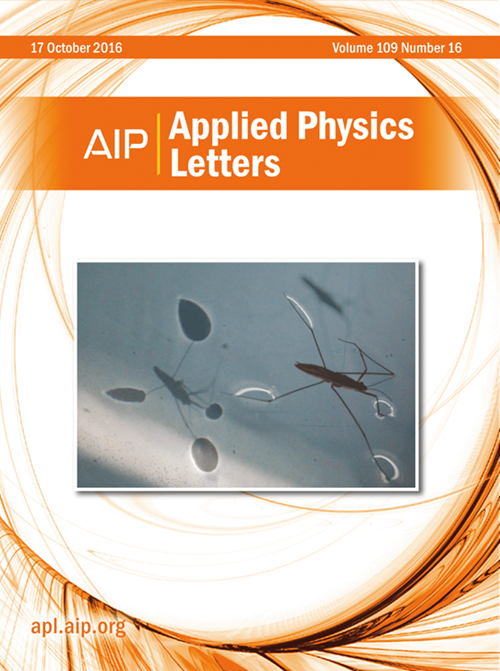Single-shot Fourier ptychography using polarization-encoded illumination
IF 3.5
2区 物理与天体物理
Q2 PHYSICS, APPLIED
引用次数: 0
Abstract
Fourier ptychography (FP) is widely adopted for label-free, high-resolution quantitative phase imaging (QPI) of biological samples. However, its imaging speed is limited by the need for multiple acquisitions. In this work, we propose a single-shot FP technique that uses linear polarizers to encode multiple illumination wavevectors and a polarization camera to capture multiple sets of information simultaneously. A multiplexed FP algorithm, utilizing both the bright-field and dark-field information, reconstructs a high-resolution quantitative phase image from the single-shot intensity image. Verified with resolution targets and a histological sample, our method achieved a resolution improvement of 2.5 times the diffraction limit of the objective lens and provided QPI over a large field-of-view. Additionally, we demonstrated high-speed FP at 75 frames per second, limited only by the sensor's readout speed, enabling QPI of fast-moving microorganisms.傅立叶层析成像(FP)被广泛用于生物样本的无标记、高分辨率定量相位成像(QPI)。然而,由于需要多次采集,其成像速度受到限制。在这项工作中,我们提出了一种单次 FP 技术,该技术使用线性偏振器对多个照明波矢进行编码,并使用偏振相机同时捕捉多组信息。多路复用 FP 算法利用明场和暗场信息,从单次强度图像重建高分辨率定量相位图像。通过对分辨率目标和组织学样本的验证,我们的方法将分辨率提高到了物镜衍射极限的 2.5 倍,并在大视场范围内提供了 QPI。此外,我们还展示了每秒 75 帧的高速 FP,仅受传感器读出速度的限制,从而实现了快速移动微生物的 QPI。
本文章由计算机程序翻译,如有差异,请以英文原文为准。
求助全文
约1分钟内获得全文
求助全文
来源期刊

Applied Physics Letters
物理-物理:应用
CiteScore
6.40
自引率
10.00%
发文量
1821
审稿时长
1.6 months
期刊介绍:
Applied Physics Letters (APL) features concise, up-to-date reports on significant new findings in applied physics. Emphasizing rapid dissemination of key data and new physical insights, APL offers prompt publication of new experimental and theoretical papers reporting applications of physics phenomena to all branches of science, engineering, and modern technology.
In addition to regular articles, the journal also publishes invited Fast Track, Perspectives, and in-depth Editorials which report on cutting-edge areas in applied physics.
APL Perspectives are forward-looking invited letters which highlight recent developments or discoveries. Emphasis is placed on very recent developments, potentially disruptive technologies, open questions and possible solutions. They also include a mini-roadmap detailing where the community should direct efforts in order for the phenomena to be viable for application and the challenges associated with meeting that performance threshold. Perspectives are characterized by personal viewpoints and opinions of recognized experts in the field.
Fast Track articles are invited original research articles that report results that are particularly novel and important or provide a significant advancement in an emerging field. Because of the urgency and scientific importance of the work, the peer review process is accelerated. If, during the review process, it becomes apparent that the paper does not meet the Fast Track criterion, it is returned to a normal track.
 求助内容:
求助内容: 应助结果提醒方式:
应助结果提醒方式:


